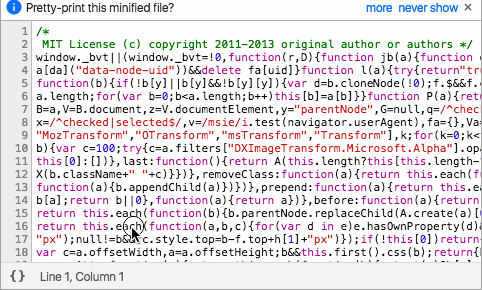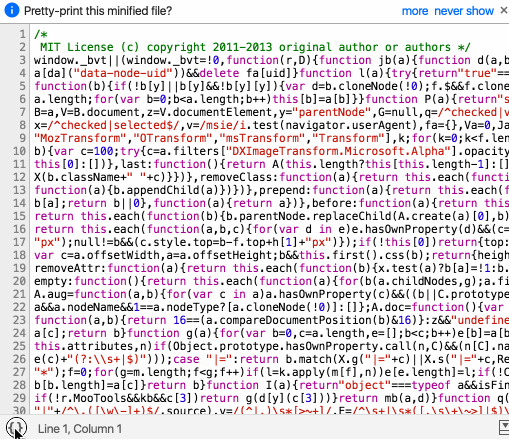One approach you can try is a reverse proxy.
The Chrome prettify feature is OK but I found the proxy approach more stable (you don't have to keep pressing that pesky {} button) and it will work on every browser (like those that don't have Chrome's prettify feature).
The proxy sits between your browser and the web server (which could be running on a remote server or your local machine). All the web requests go through the proxy except those you configure to serve from a different location. In this case you would serve an un-minified version of the JavaScript file from a local location rather than the remote minified version. I've used nginx reverse proxy for this (on Windows) but expect others could be used in similar fashion (e.g. HA Proxy).
Example steps and configuration below:
Configure your nginx\conf\nginx.conf file something like this, the important parts are the location alias (to intercept the JavaScript file request) and the location proxy_pass (to forward all other requests to the upstream server):
worker_processes 1;
events {
worker_connections 1024;
}
http {
include mime.types;
default_type application/octet-stream;
sendfile on;
keepalive_timeout 65;
server {
listen 8081;
server_name localhost;
# the unminified version of the JavaScript file you want to debug
location /context/js/compressed.js {
alias "C:/dev/nginx-1.10.2/html/uncompressed.js";
}
# your remote web server
location / {
proxy_pass http://1.2.3.4:8080/;
}
error_page 500 502 503 504 /50x.html;
location = /50x.html {
root html;
}
}
}
Start nginx
open a command window (run cmd.exe)
cd\
cd C:\dev\nginx-1.10.2
start nginx
Open browser e.g. http://localhost:8081/context/index.html
The proxy fetches all resources from the remote server except the file requested from http://localhost:8081/context/js/compressed.js which the proxy now serves from the locally cached (unminified) file (i.e. the file uncompressed.js).
If you don't have one, you can create your uncompressed.js easily with an un-minifier / beautifier (though the original pre-compressed file would be besst as it would have all the meaningful names). The important thing is it's functionally equivalent to the minified file.


